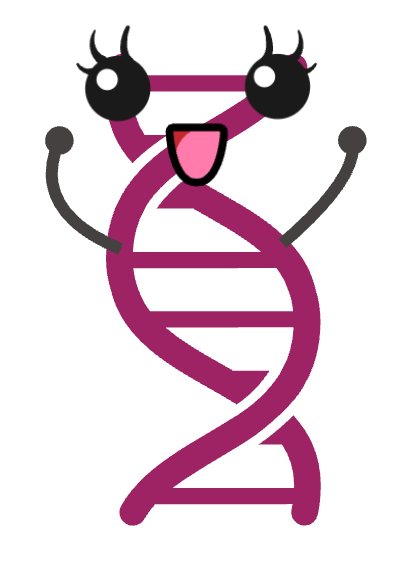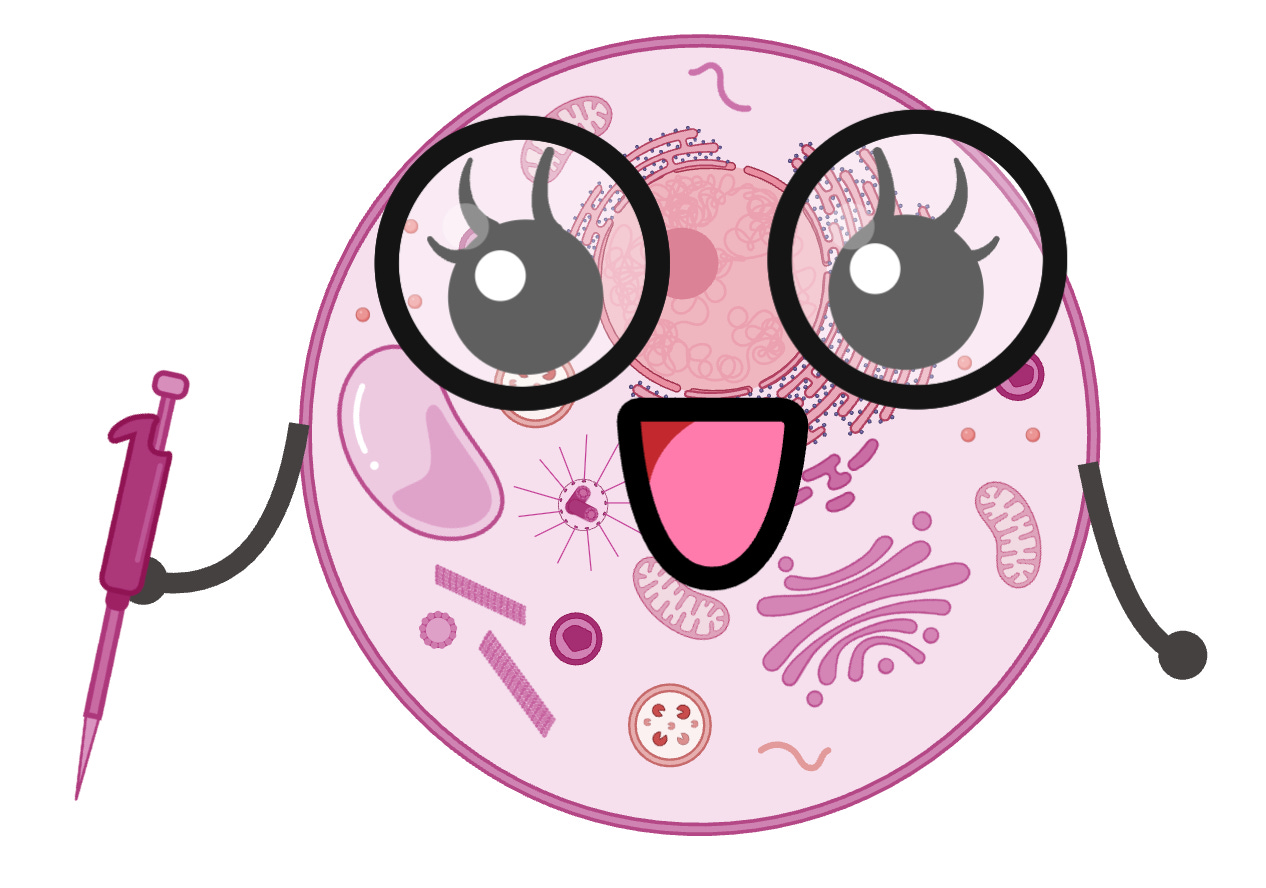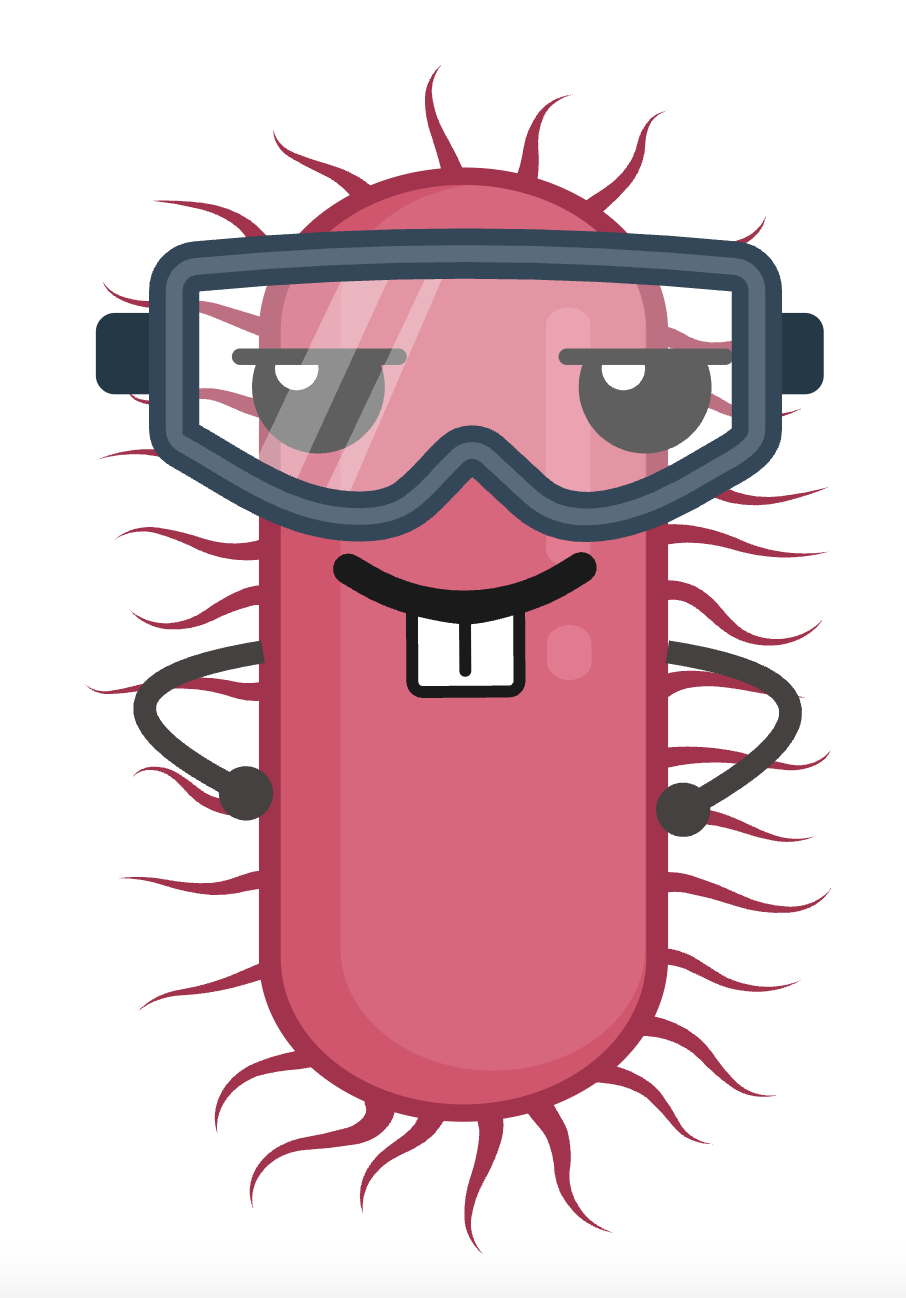Last updated: 17/09/2025
If the movies were correct, all lab scientists would either have crazy hair and spend their time pouring colourful solutions together to make something bubbly, or be super slick and perfectly manicured, solving imminent disasters by shuffling things around on a holographic touchscreen. If you are interested in knowing what scientists in different disciplines actually get up to in the lab most days, here is a list of the top techniques used across a range of other disciplines, and some resources if you want to learn more. The categorisation here is intended to help break this up, but it is also somewhat arbitrary; many of the techniques are widely used across multiple other disciplines. Additionally, we are not experts in these techniques. Please correct us where we might be incorrect, or recommend more suitable introductory references for any of the techniques.
This post is part of the Molecular Meditations 101 Series. You can read the others here.
1. Molecular Biology
We’ve known about DNA for a pretty long time (it was first isolated in 1869 from a bunch of pussy bandages). Its structure wasn’t solved till almost 100 years later, and since then, our ability to study and manipulate DNA and RNA has only gotten more creative - for example, taking advantage of Taq proteins from bacteria found in hot springs, or repurposing bacterial immune systems to cut and edit DNA for gene therapy!
Isolates nucleic acids from a sample of cells/tissues. Cells are broken open, and the nucleic acids are separated from the other cellular components using centrifugation and different solubility.
First step before being able to then analyse the RNA or DNA by PCR, sequencing or other techniques.
Learn more - The old school method and high throughput technologies - by magnetic bead or by vacuum column
Polymerase Chain Reaction (PCR)
Amplifies a specific DNA segment. It uses enzymes and repeated heating and cooling cycles to replicate even tiny amounts of DNA.
Used for molecular cloning or to detect the presence of certain sequences/genes.
Learn more - Video explainer
Separates DNA/RNA fragments by size. The molecules are run through a gel with an electric current, and the smaller ones travel faster than the larger fragments.
Used for confirming the presence or purity of a particular fragment after PCR amplification.
Learn more - Video explainer
qPCR (quantitative PCR)
Quantifies DNA or RNA (via cDNA) in real time. A fluorescent dye that binds to DNA can be measured and used to calculate the starting amount of DNA.
Used to detect and compare amounts of specific DNA/RNA sequences in a sample
Learn more - Video explainer
CRISPR/Cas9 Gene Editing
Cuts and modifies genes in cells or organisms. Uses a guide RNA sequence to direct a cutting enzyme to a target DNA sequence.
Used to make genetically modified model organisms, to turn certain genes on or off, or in genetic therapies.
Learn more - Video explainer and a visual guide to gene editors
2. Cell Biology
High-school biology might have taught you what cells look like, or what some of their processes involve - they have a nucleus, a bunch of wiggly membranes that make some different organelles, and some proteins and chemicals that move around and do important things like expressing your genes or making more cells. But how do we come to know these things? The following techniques are essential in learning about the intricate details of cell biology, and, spoiler, what we actually know is way more complex than what they teach you in high school bio!
(plus, a lot of these techniques can result in amazing nanoart!)
Cell Culture (2D and 3D)
Growing cells in the lab. Under controlled and sterile conditions, cells can be cultured in media either on flat surfaces (2D) or in structured environments (3D organoids), which better replicate tissue structure.
Used to study cell behaviour, to test drugs, assess gene editing outcomes or to grow and study pathogens.
Learn more - Introductory Video (and Bonus material - learn about the first immortal cells of Henrietta Lacks)
Cell Viability and Proliferation Assays
Several techniques can be used to measure metabolic activity, membrane integrity, or DNA synthesis as a proxy for cell survival and division. For example, Trypan Blue dye is taken up by dead cells but excluded by live cells, BrdU is a nucleotide analog that is incorporated into DNA during replication, and MTT/XTT/WST assays rely on mitochondrial enzymes converting tetrazolium salts to colored formazan.
Used to monitor cell health in culture, to assess drug toxicity or growth-promoting effects, or for immune cell proliferation in response to stimulation.
Learn More - Comparing different assays
Visualises labelled molecules in cells. Using fluorescent dyes or proteins to label and visualise specific parts of cells, or pathogens within the cells.
Used to study live or fixed cells to look at cell structures, see which proteins or structures colocalise, or to detect cellular changes.
Learn more - Introduction video
Fun Side Note - Green fluorescent protein (GFP) was first isolated from jellyfish!
Fluorescence in situ hybridisation (FISH)
Fluorescently labelled DNA or RNA probes can locate specific genetic sequences within cells or tissue. The fluorescent probes are designed to bind to complementary DNA or RNA sequences in fixed cells or tissue sections, and can then be visualised under a fluorescence microscope.
Used to identify chromosomal abnormalities, detect gene amplifications or deletions, and study the spatial arrangement of the nucleic acid sequence in cells/tissues.
Learn more - Explainer video
Observing living cells over time. A time-lapse microscope technique that allows visualisation of cells without needing to fix them.
Used to study cell movement, division, or interactions, to track intracellular trafficking of proteins or organelles and to monitor real-time responses to drugs or stimuli
Learn more - Basic intro and detailed how-to
3. Microbiology
It’s mindblowing how teeny lil microscopic organisms dominate so much of life on earth. They invented photosynthesis and respiration, are the reason we have all the fun foods (bread, beer, cheese, wine and more), they (ironically) gave us antibiotics, they influence our very digestion, health, and even our mood and behaviours, and they also have the potential to wipe out the whole of our species (indeed they’ve made a pretty good attempt at it several times in the past). Mitigating the risks of antibiotic resistance, or the next global pandemic, might be some of the most important research areas scientists can be working on!
Bacterial Culture & Streak Plating
Growing bacteria on nutrient agar plates. The use of specific antibiotics in the agar allows only specific bacteria to be grown, and streaking out the colonies reduces density to allow single colonies to be selected.
Used for stock maintenance, identifying bacteria from clinical/environmental samples, and selecting colonies for cloning.
Learn more - Culture methods and Extended microbiology techniques video
Fun Side Note - check out these beautiful and creative agar art works!
Classifies bacteria as Gram-positive or Gram-negative. This classification is based on the cell wall structure of the bacteria, distinguishable by staining with different dyes (turning the bacteria either purple or pink).
Used as a first step to quickly and cheaply identify and classify bacteria, which can also help to guide antibiotic choices in clinical labs
Learn more - Explainer Video
Growing microbes that cannot tolerate oxygen. Using special chambers or sealed containers, anaerobic conditions can be maintained.
Used to study or isolate anaerobic bacteria from the gut or wounds, or to culture Clostridium, Bacteroides, or other obligate anaerobes.
Learn more - Different techniques explained
Antibiotic Sensitivity Testing (e.g. Kirby-Bauer Disk Diffusion)
Screening bacteria sensitivity against different antibiotics. Small antibiotic-treated disks are placed on a uniform plate of bacteria. After incubation, a ring of growth inhibition will be visible around any of the disks that contain an antibiotic to which the bacteria are sensitive.
Used to determine how susceptible a bacterium is to different antibiotics (the larger the ring, the more susceptible).
Learn more - Explainer Video
A measure of the number of infectious virus particles. By counting areas of dead cells (plaques) on a cell layer infected with a known dilution of virus, the number of infectious particles that were in the sample can be calculated.
Used to quantify viral titer (e.g., in vaccine development), to study viral replication and spread and to compare viral strains or mutations
Learn more - Explainer Video
4. Biochemistry
A human cell is really, really complex and insanely busy! There are in the order of 1-10 billion proteins bumping into other molecules millions of times per second. Imagine Times Square on New Year's Eve, add x5 more people, and then have them running around randomly at full speed. Luckily, there are lots of ways to try to sort through this madness and understand proteins and cellular mechanisms in more detail.
Fun side note - listen to this Hard Drugs podcast series to learn more about how cool proteins are.
Detects specific proteins using antibodies. The proteins are separated by size on a gel and then bound with specific antibodies for detection.
Used to confirm protein expression, compare levels of expression, or detect post-translational modifications of proteins (like phosphorylation).
Learn more - How it works and Explainer video
Tests the rates of an enzymatic reaction. How fast an enzyme converts a substrate into a product can be measured using fluorescence.
Used to study enzyme kinetics, to screen for inhibitors in drug development or to monitor the metabolic activity of cells.
Learn more - Explainer video
Protein Purification (e.g. affinity chromatography)
Isolates a specific protein. Different methods can separate the target protein from a complex mixture using its chemical or binding properties.
Used to isolate pure proteins and to study protein-protein interactions.
Learn more - Explainer video
Quantifies DNA, RNA or protein concentrations. Determines the total amount of DNA, RNA or protein in a sample by measuring how much light is absorbed at specific wavelengths.
Used to measure both concentration and purity (by comparing an absorbance ratio) or to track enzyme activity by following product formation.
Learn more - Explainer Video
ELISA (Enzyme-Linked Immunosorbent Assay)
Detects and measures amounts of a specific protein. A plate-based assay that uses antibodies linked to enzymes to bind the target and measures levels of fluorescence to quantify the levels.
Used in diagnostics, such as detecting viral antigens, to measure cytokines, hormones, or antibodies in research samples or as Biomarker detection in patient samples.
Learn more - Explainer Video
5. Immunology
Your immune system is really, really complicated… it needs to be able to recognise invading pathogens, communicate to the cells that can come stop them, and then remember that baddie so it can get rid of it faster next time. It also needs to be able to deal with internal threats like cancer, and it needs to be able to do all this without attacking friendly cells or causing too much collateral damage. It is not surprising then that there are a lot of different tissues, cell types, proteins involved in these responses, and a lot of techniques that help us study them.
Fun Side Note - Vaccines are really, really awesome, just look at the data!
While ELISA (Enzyme-Linked Immunosorbent Assay, see biochem techniques) detects and measures specific proteins, ELISpot detects individual cells that secrete a specific protein, creating visible spots.
Used in measuring immune cell activity, especially T-cell or B-cell responses.
Learn more - Explainer Video
Analyses cell populations based on fluorescence and light scattering. Cells are passed through lasers in a fluid stream, allowing them to be assessed individually based on their size, complexity, and fluorescent labels and then grouped into populations.
Used to count and characterise cells (such as specific B-cell or T-cell populations, cancer cells, etc), to detect protein expression on the surface or inside cells and to sort specific cell populations for further study (Fluorescence-activated Cell Sorting - FACS).
Learn more - Explainer Video
Visualises specific proteins in tissue sections. The tissue is fixed, sectioned onto slides and then specific cells, proteins or pathogens can be stained using antibodies and visible labels (colour or fluorescence).
Used to assess immune responses in tissues (e.g., inflammation, tumours), or to diagnose diseases like cancer by identifying protein markers.
Learn more - Explainer Video
Cytokine Profiling (e.g. multiplex assays)
Measure multiple cytokines in a single sample at once. These techniques use antibodies on bead-based or chip-based formats to detect the presence and amounts of different cytokine biomarkers (for example, by ELISA, Flow Cytometry, qPCR, etc).
Used to study the immune response profile (e.g., in infection or autoimmunity), assess vaccine responses or inflammation markers, or to compare immune activation across conditions
Learn more - Cytokine profiling for diagnostics, and a deep dive into different disease profiles
Lymphocyte Isolation & Activation Assays
Techniques to separate lymphocytes (T cells, B cells, NK cells) from blood or tissue and study how they respond to stimulation. Isolation is often done by density-gradient centrifugation (e.g. Ficoll) to separate out mononuclear cells (PBMCs) from the samples, followed by enrichment of specific cell types with magnetic beads or flow cytometry.
Activation assays expose these cells to mitogens, antigens, or antibodies and measure proliferation, cytokine production, or killing activity by flow cytometry, ELISPOT, or radioactive/fluorescent readouts.
Used to investigate T and B cell function, monitor vaccine or infection-specific responses, evaluate immunotherapies, or analyse T-cell receptor signalling and cytotoxicity.
Learn more – Principles of PBMC isolation, T-cell activation assays,
Stay tuned for part 2 of this post. Do let us know if there is anything else you would want us to cover. This post is part of the Molecular Meditations 101 Series. You can read the others here.










Loved this so much as an entry level way to get the lay of the land when it comes to bioscience tehcniques. PS: mystical turnips :)